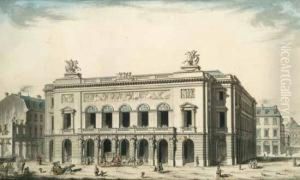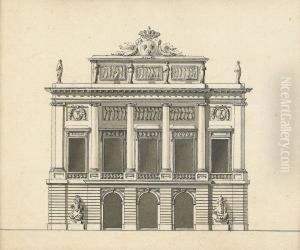Gustave, Louis Gust. Taraval Paintings
Louis Gustave Taraval, born in 1738 in Paris, France, was a notable 18th-century French artist whose work and influence spanned across painting and engraving. He was born into an artistic family; his father, Guillaume Thomas Taraval, was a distinguished painter from Sweden who had moved to France, contributing significantly to Gustave's early exposure to the arts. His family's artistic lineage and connections provided him with an environment ripe for developing his skills and passion for art from a young age.
Taraval's education in art was comprehensive, studying under the guidance of his father and other prominent artists of the time. He further honed his skills at the Royal Academy of Painting and Sculpture in Paris, an institution that played a crucial role in shaping the careers of many French artists. Taraval's talent was recognized early on, and he became a member of the Academy, contributing to his growing reputation within the artistic community of France.
Throughout his career, Taraval was known for his versatility, working across different mediums but particularly excelling in engraving and painting. His works often depicted historical and mythological themes, showcasing his ability to convey complex narratives through detailed and dynamic compositions. Despite the popularity of Neoclassicism during his lifetime, Taraval maintained his unique style, blending classical elements with his own artistic expression.
Taraval's contributions to French art were not limited to his creations. He was also involved in several significant projects, including decorations and engravings for royal residences and public buildings, reflecting his status as a respected artist within the French court. However, like many of his contemporaries, Taraval's career was inevitably affected by the political upheavals leading up to and during the French Revolution.
Louis Gustave Taraval passed away in 1794, leaving behind a legacy that, while perhaps not as widely recognized as some of his peers, contributed significantly to the artistic landscape of 18th-century France. His works continue to be appreciated for their beauty and historical value, representing an important chapter in the history of French art.

